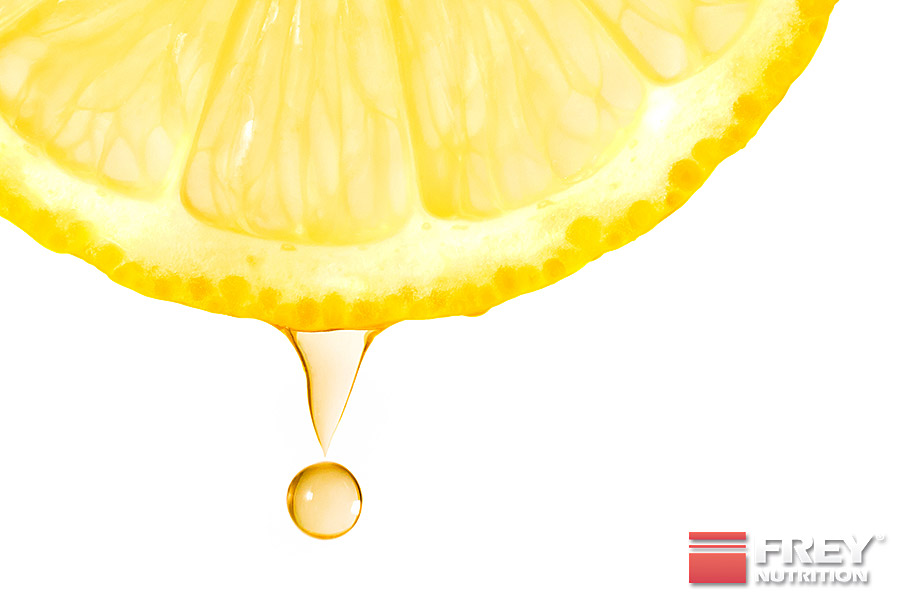Α-LIPOIC ACID FOR MUSCLE MASS AND STRENGTH
THE AVAILABLE STUDIES PROVE THAT SUPPLEMENTATION OF ALPHA-LIPOIC ACID CAN INCREASE STRENGTH AND MUSCLE MASS GROWTH. ALPHA-LIPOIC ACID IS ALSO A VERY INTERESTING SUPPLEMENT DUE TO ITS EXTREMELY STRONG ANTIOXIDANT ABILITIES
Scientists recognized the importance of alpha lipoic acid (hereinafter referred to as ALA) as early as the 1950s and categorized the substance as an antioxidant in 1988 [1]. ALA is a sulfur-containing fatty acid and acts as a co-factor in the energy supply of lipoproteins. ALA also occurs naturally as a compound that can be synthesized in plants, animals and humans. This property allows ALA to act both as a co-factor for various important enzymes and as an antioxidant [2].
ALA's primary function in the body is to activate enzymes that promote energy-producing molecules such as pyruvate and break down amino acid byproducts. Basically, ALA helps absorb energy and nutrients from food. The body needs ALA to produce energy. This happens through the SENSITIZATION OF THE INSULIN RECEPTORS , which means that less insulin is released, but at the same time it can have a significantly increased effect. ALA plays a crucial role in the mitochondria. These are the energy-producing power plants in the cells. What makes ALA special as an antioxidant is its versatility; it helps to deactivate an unusual range of free radicals in many body systems [3].
ALA ENHANCES INSULIN ACTION BY SENSITIZING INSULIN RECEPTORS.
ALA also works closely with vitamins C and E and some other antioxidants, "recycling" them and making them much more effective [4]. ALA is such a powerful antioxidant that some researchers call it the "UNIVERSAL ANTIOXIDANT" Studies have shown that ALA, when combined with vitamins C and E, helps increase their effectiveness in fighting free radicals [5].
Research has also shown that ALA can even take over the function of vitamin C in animals with a deficiency of vitamin C [6]. ALA itself can directly neutralize free radicals, both in the membranes and in the cells, because it IS BOTH WATER SOLUBLE AND FAT SOLUBLE [7]. This is especially important for athletes, as intense physical activities such as weight training or extreme cardio can cause very large oxidative damage by releasing free radicals in the body. This is why antioxidants are important for maintaining cell health and are essential for athletes.
RESEARCH RESULTS
To find out the connection between ALA and insulin sensitivity, the following tests were conducted. In type 2 diabetes, the increased blood sugar is caused by insulin resistance rather than insulin deficiency and a series of treatments with ALA were carried out which resulted in an improvement in insulin sensitivity.
In patients with type II diabetes, doses of 600 mg and 1000 mg of alpha-lipoic acid resulted in an improvement in insulin sensitivity of 27% and 51%, respectively, compared with placebo [8,9]. Another study of 20 patients with type II diabetes found that oral administration of 1200 mg of alpha-lipoic acid for 4 weeks resulted in a significant improvement in glucose metabolism. A placebo-controlled study of 72 patients with type II diabetes found that oral alpha-lipoic acid at doses of 600 mg/day, 1200 mg/day, or 1800 mg/day for 4 weeks resulted in an improvement in insulin sensitivity of 25% [10,11].
ALA has been tested in many animal and human studies for use as a preventative and/or treatment for many age-related diseases. These diseases include heart disease, stroke, diabetes, Parkinson's and Alzheimer's disease, as well as declines in work capacity, muscle strength, brain function and immunity. It has been studied for use in HIV disease and multiple sclerosis. In Germany in particular, it is already prescribed to treat long-term complications of diabetes, such as nerve damage. The thinking is that this damage is caused by free radicals. There is also evidence that it can help reduce insulin resistance and thus better control blood sugar levels [12].
SUPPLEMENTATION OF ALA
ALPHA-LIPOIC ACID IN THE FORM OF FOOD SUPPLEMENTS is rapidly absorbed, rapidly metabolized, and just as rapidly eliminated from plasma and tissues. This suggests that several smaller doses per day are more useful than a single large dose per day. Recommendations for the use of alpha-lipoic acid as an antioxidant range from 50 mg/day to 600 mg/day.
In a study on the antioxidant effects of alpha-lipoic acid in healthy humans, a dose of 600 mg/day over a period of 4 months resulted in a reduction in several biomarkers of oxidative stress compared to baseline [13].
For sensitization of insulin receptors, it is recommended to take higher doses in the range of 600 MG/DAY TO 1200 MG/DAY lay.
Alpha-lipoic acid should, if possible, be taken with a meal containing moderate amounts of carbohydrates to avoid hypoglycemia. On training days, it is essential to take it immediately after training with the PWN so that nutrients can be quickly and effectively transported into the muscle cells.
SIDE EFFECTS
Alpha lipoic acid has few to no side effects. Very high doses beyond 3000 mg per day are known to cause nausea and stomach upset and can lead to low blood sugar levels. On the positive side, ALA can sometimes lead to general relaxation, light-hearted feelings and a better sense of well-being [14].
SUMMARY
Supplementation with alpha-lipoic acid can lead to measurable increases in strength and muscle.
WHEN TAKING ALA AFTER TRAINING, NUTRIENTS ARE TRANSPORTED FASTER TO THE MUSCLE CELLS DUE TO IMPROVED INSULIN EFFECT, WHICH RESULTS IN MUSCLE BUILDING MORE FASTER. ALPHA-LIPOIC ACID PLAYS AN IMPORTANT ROLE AS ONE OF THE MOST EFFECTIVE ANTIOXIDANTS AND IS OF PARTICULAR BENEFICIAL TO THE HUMAN BODY.
Based on the study results and the evidence, alpha-lipoic acid is an extremely interesting supplement and is already widely used in professional circles - with consistently positive feedback.











